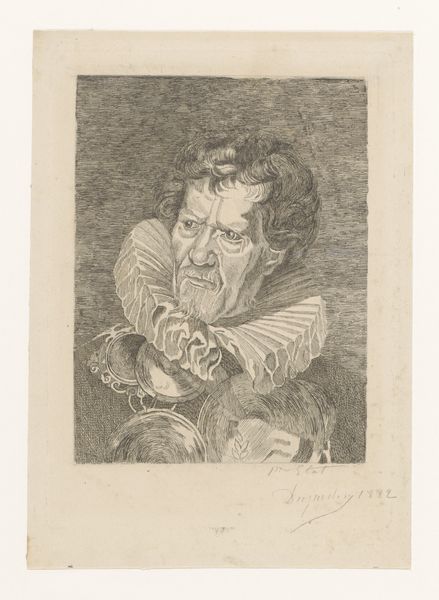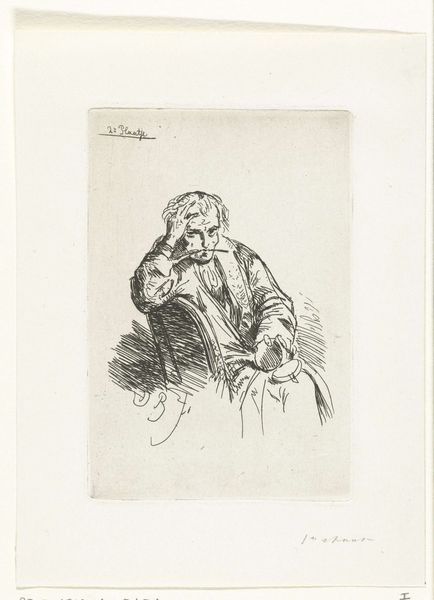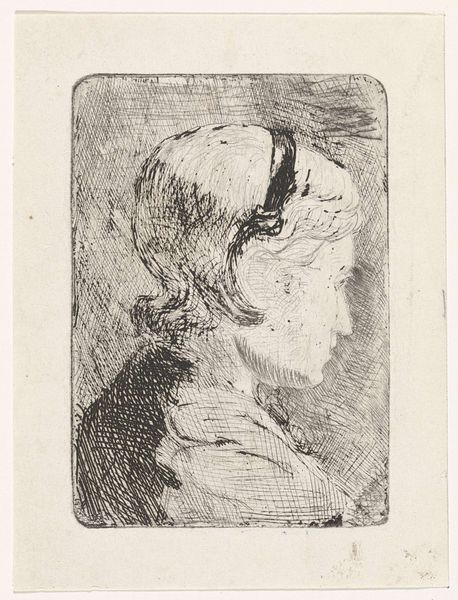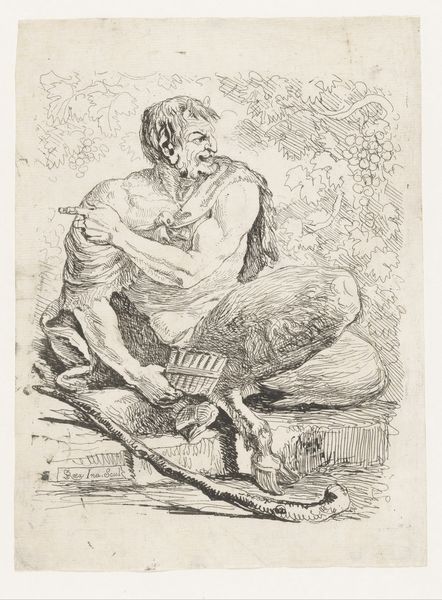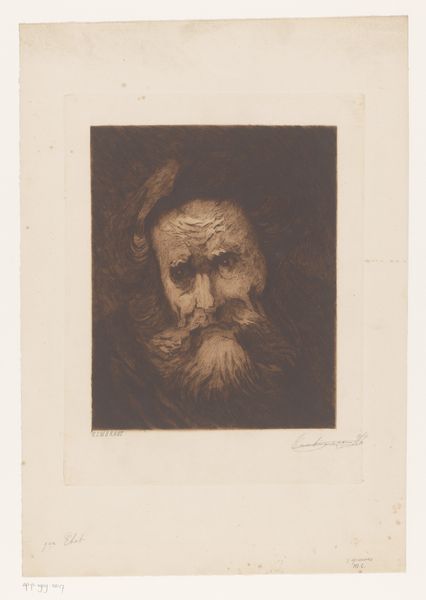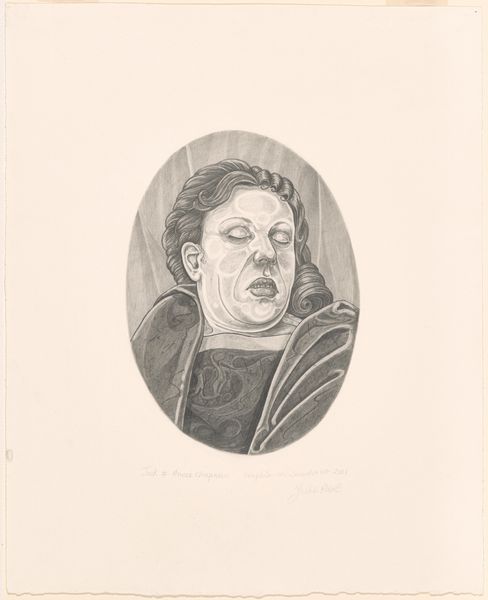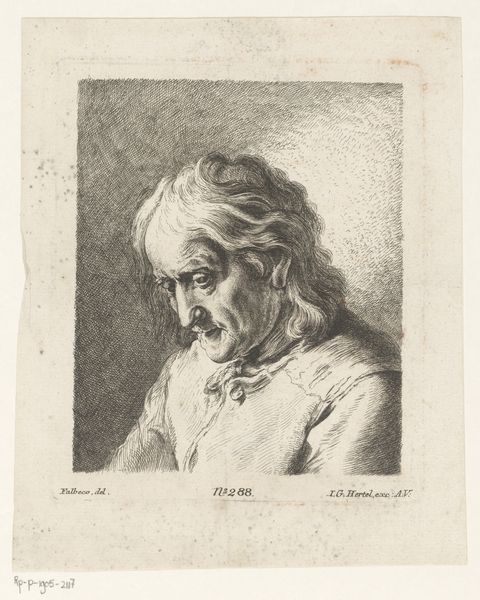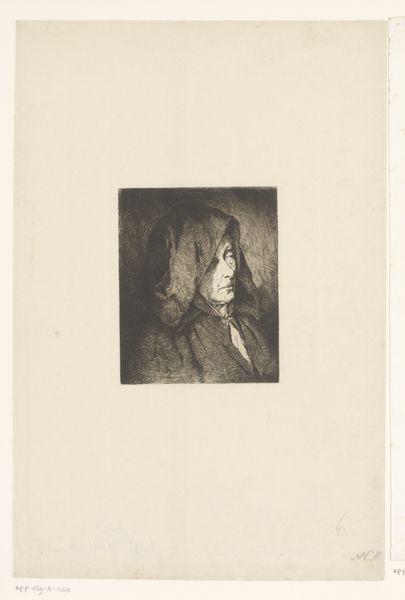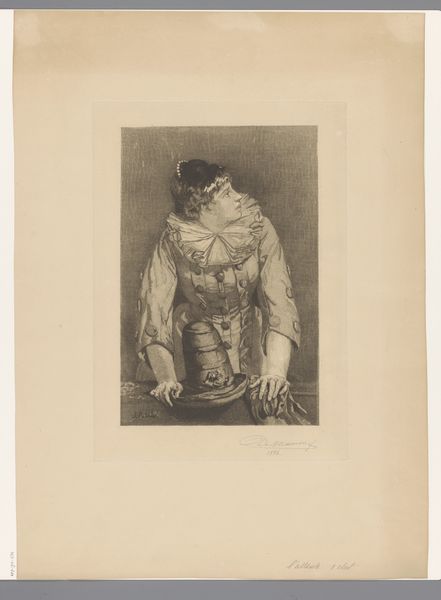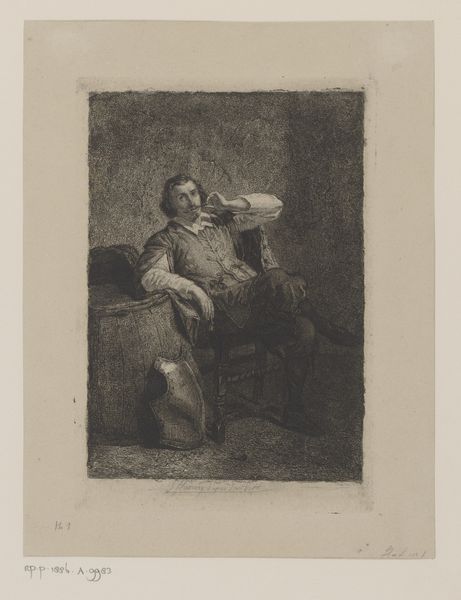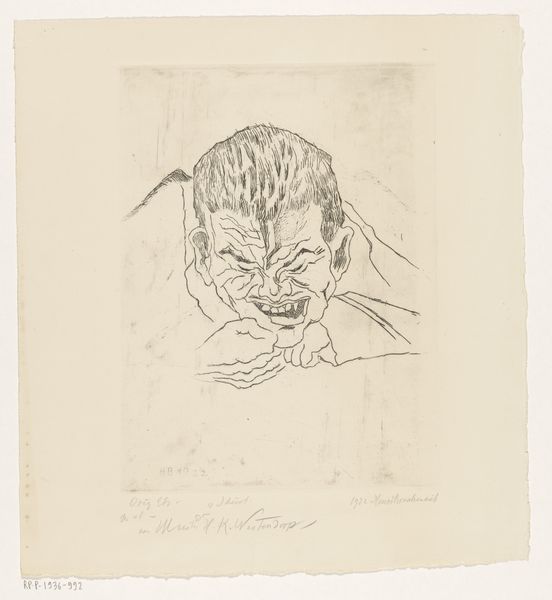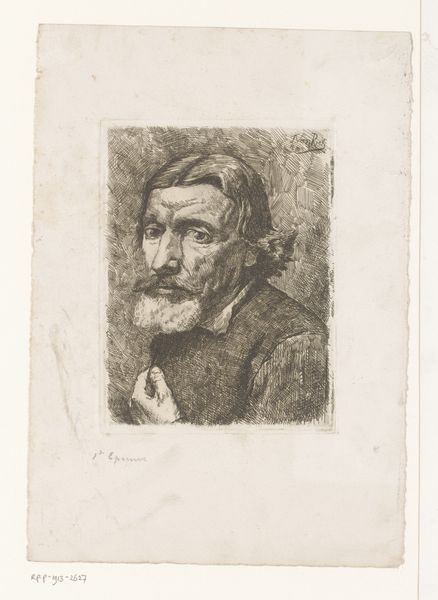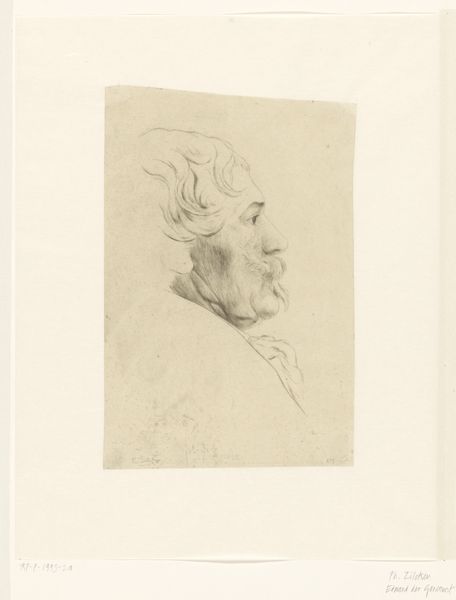
#
pencil drawn
#
light pencil work
#
pencil sketch
#
old engraving style
#
charcoal drawing
#
portrait reference
#
pencil drawing
#
limited contrast and shading
#
portrait drawing
#
pencil work
Dimensions: height 195 mm, width 140 mm
Copyright: Rijks Museum: Open Domain
Curator: This pencil sketch, titled "Portret van Abraham Grapheus," was completed by Joseph Dujardin in 1882. It possesses a certain gravity, don't you think? Editor: Indeed. My first impression is the striking textural contrast between the almost frenetic energy of the hair and the relative smoothness of the face. The stern expression certainly adds to that sense of gravity you mentioned. Curator: Formally speaking, the contrast hinges on Dujardin's mastery of line weight and density. The artist employed a rigorous, almost scientific, layering of thin lines to build up both volume and the sense of shadow. Editor: I wonder what the cultural significance might be here. Note the inclusion of what appears to be ceremonial objects and an elaborate ruff. Is Dujardin engaging with earlier portrait traditions of civic leaders, perhaps commenting on a longing for the past? Curator: Good point! Structurally, the ruff and hair nearly overwhelm the face, visually echoing Abraham Grapheus's powerful historical role in the Guild of Saint Luke. Editor: He seems burdened. Consider the downward gaze, the creases around the eyes, and the slightly downturned mouth. It implies perhaps Dujardin wanted to examine the weight of institutional power and legacy in 19th-century Belgium. Curator: Absolutely. There is a delicate interplay of lines which defines not only shapes but emotion as well. Observe the shading at the left corner of the eye; this dark corner juxtaposed with the highlighted lines in the hair suggest both exhaustion and vitality. Editor: In that period, such portraits also served as markers of social identity and perhaps a kind of aspirational iconography for emerging middle classes. We may have the interplay between private representation and the demands of public role. Curator: The stark rendering in pencil emphasizes this internal struggle. Rather than opulent color or sweeping gestures, the artist focuses on the granular, essential, marks that communicate emotion. Editor: Looking at this pencil rendering, it feels as though Dujardin succeeded in capturing something of the human condition as it wrestled with its place in shifting societal landscapes. Curator: A piece that masterfully illustrates how technique can articulate even the subtlest emotions, allowing the structure of the image itself to echo themes within the portrait.
Comments
No comments
Be the first to comment and join the conversation on the ultimate creative platform.
